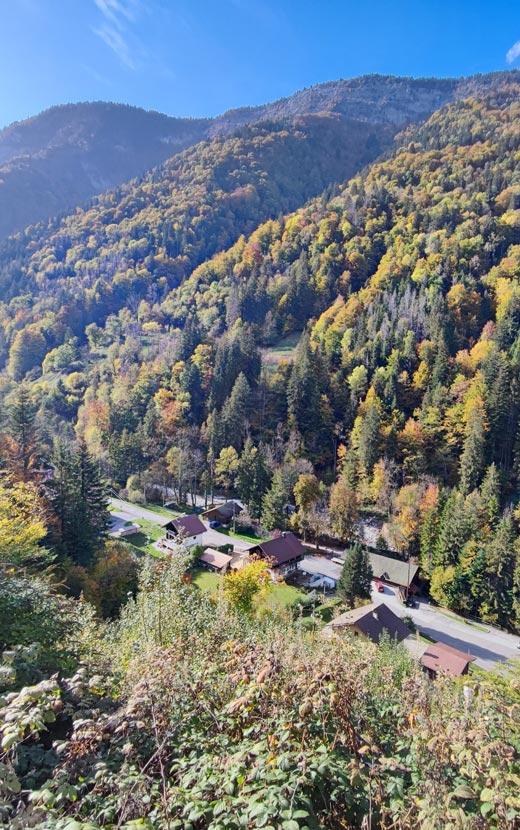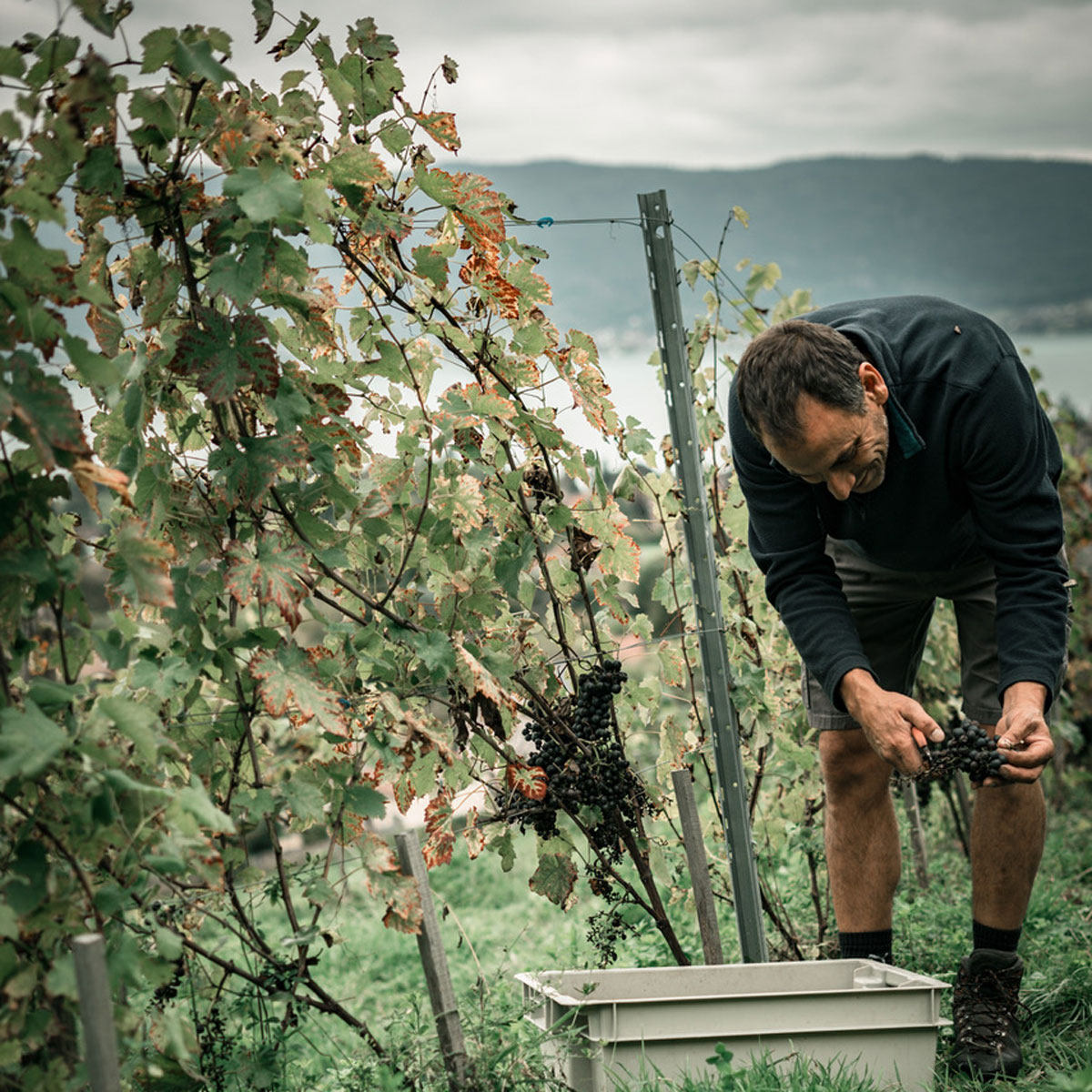
Once upon a time
Winegrowing revival
When a handful of enthusiasts bring the past to the presentFor centuries, grapevines grew all across the hillsides in and around the Lake Annecy Basin. In the 1930s, a phylloxera infestation decimated local vineyards, and the real estate boom that followed proved more lucrative than the grapes themselves.
Yet over the past few years, grapevines have slowly but surely started to reappear along the hillsides, cultivated by a few passionate individuals who, through sheer effort, reintroduced ancestral grape varieties while breathing new life into plots left fallow long ago. And to be honest, they have a hard time hiding the pure joy they experience in this endeavor.
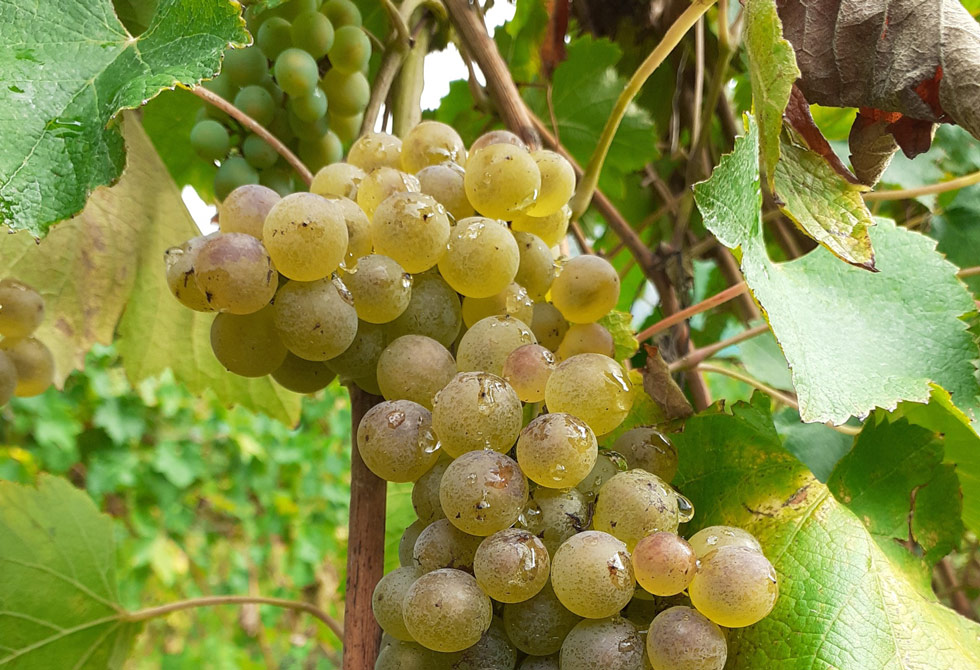
© Les Vignes du Lac
Whether grape growers, winemakers, sommeliers, wine aficionados, and newcomers, their common passion for wine serves as shared motivation, in addition to a desire to revive an ancestral expertise through the fertile hillsides of yesteryear.
They believe in respect for the living world, and grow their grapes and make their wine without using chemical fertilizers, herbicides, or any other synthetic chemicals.
Everyone enjoys the friendly atmosphere when spending time together on this adventure, where the key events throughout the annual growing cycle always finish by sharing a few bottles of great wine together.
Veyrier-du-Lac, Menthon-Saint-Bernard, Talloires-Montmin, Villaz, Frangy, hop aboard for an incredible excursion down winemaking way.
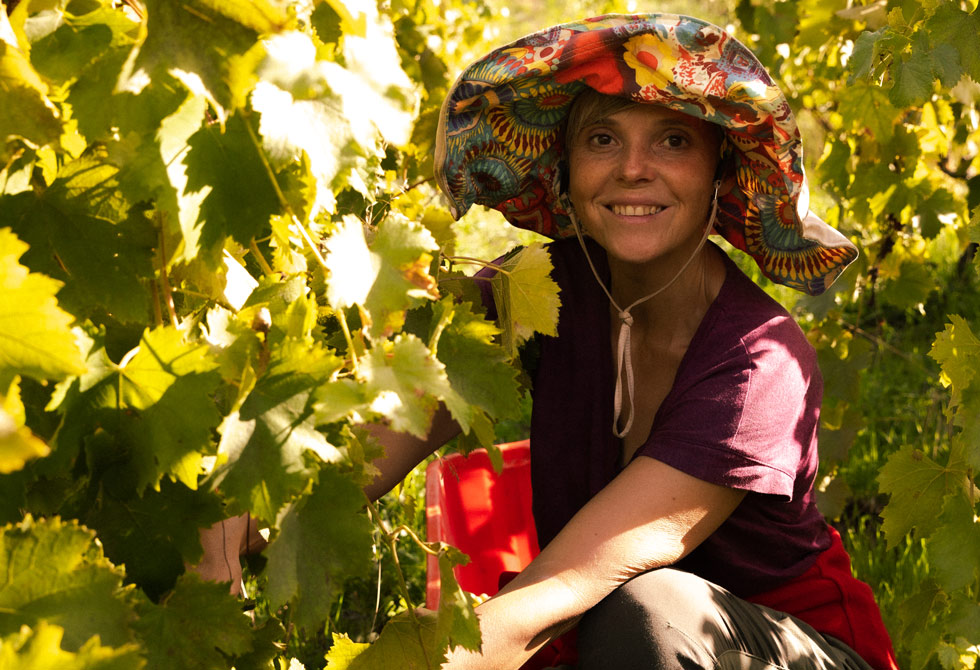
© Eloa Photographie / Catherine Héritier
Les Vignes du Lac in Veyrier-du-Lac
Naming the first vintages took some time, they include “La Toute Première” (The Very First), “La Deuxième” (The Second), “La Deux Mille Vignt” (Two-Thousand Twenty), and “Son Altesse Rarisime” (Rare Beauty) to name a few. The grapevines for these first vintages from Veyrier-du-Lac Vineyards were planted in 2015. The goal of this incredible endeavor is to reconnect with the region’s rich winemaking past.
The idea had been milling around the heads of several people, with one Pierre Lachenal leading the charge. Industrious to the core, Pierre also led the project to rebuild the Latin-rig sailboat Esperance 3. For the winemaking project, he grabbed a few local enthusiasts, including Bruno Bozzer, a highly-acclaimed sommelier and legendary local wine merchant who owns the wine shop Java des Flacons.
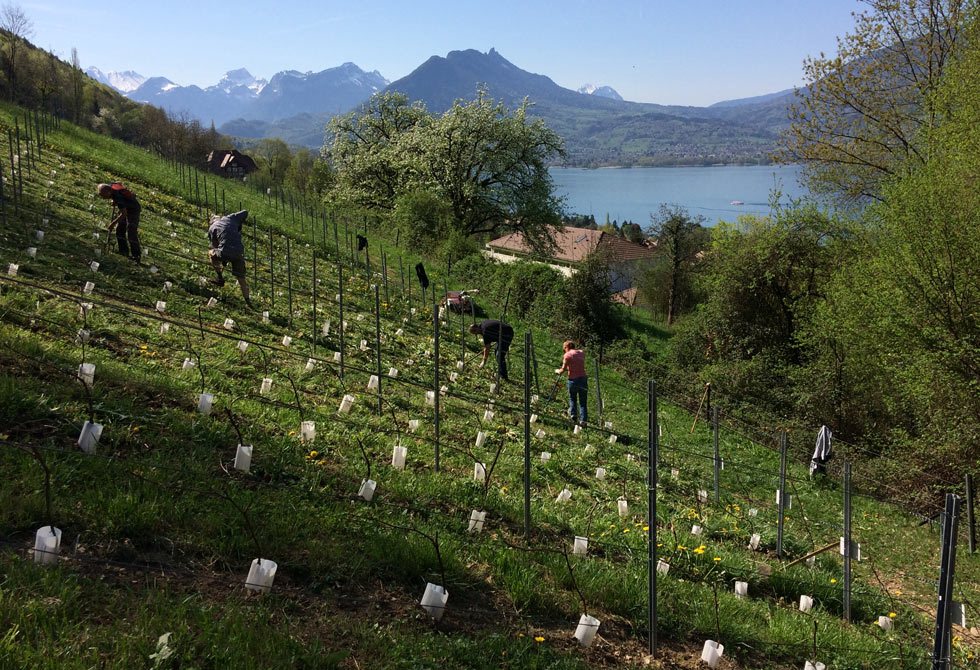
© Les Vignes du Lac / Vineyards on the heights of Veyrier-du-Lac
Ground finally broke thanks to a handful of property owners who generously provided land (not zoned for building) to the budding non-profit. Several enthusiasts in search of an oenological adventure joined forces.
Bruno Lupin, a grape grower in Frangy, took charge of technical operations, providing his well-known expertise. One-thousand young vines were planted in 2020, and today, on a hectare of land, the vineyard grows more than two-thousand grapevines for making organic wine.
The one-hundred and sixty members of the non-profit happily hustle and bustle around when working the vines: trimming, disbudding, pulling weeds, stringing bird-protection nets (and then pulling them down), and participating in the harvest.
“The first year, one-hundred and fifty of us showed up for the harvest… which only lasted five minutes, the time it took to cut the few precious bunches of grapes the vines were willing to provide us,” remembers a smiling Bruno Bozzer.
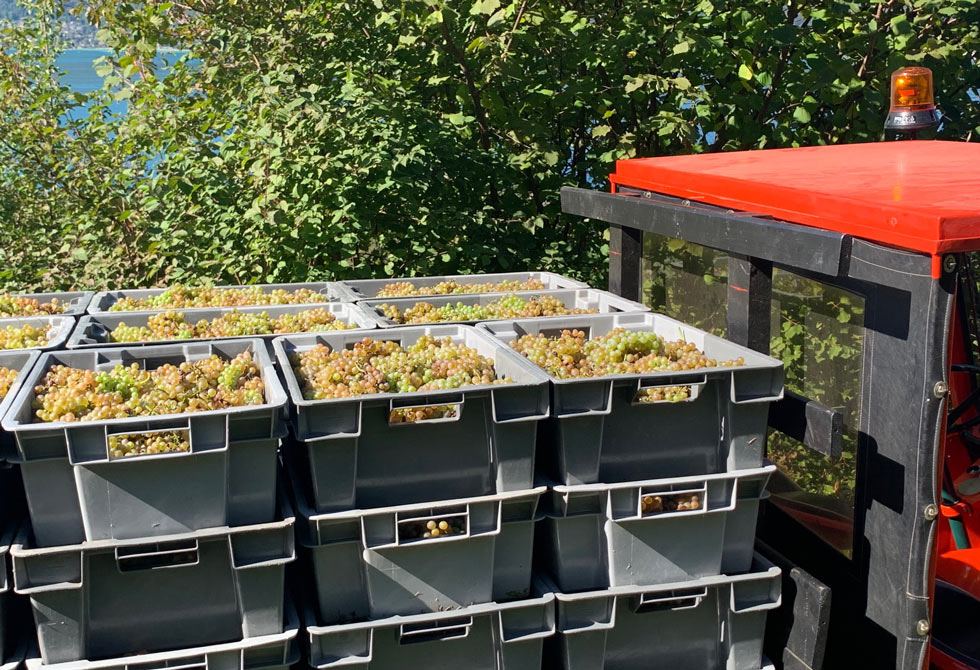
© Les Vignes du Lac / Harvest
Everyone anxiously awaited the very first tasting, since theirs was a risky bet with certain amount of pride involved. Bruno Bozzer came down with the initial verdict: their wine was good, very good. According to him, it could even compete with some of the best wines from other regions of France.
Approximately two-thousand bottles with the Vignes du Lac stamp were made in 2022. Although still a secret, volume should increase this year with grapes harvested from the second parcel.
Only members of the non-profit are lucky enough to have a bottle or two (or three) reserved for them. However, new members are always welcome…
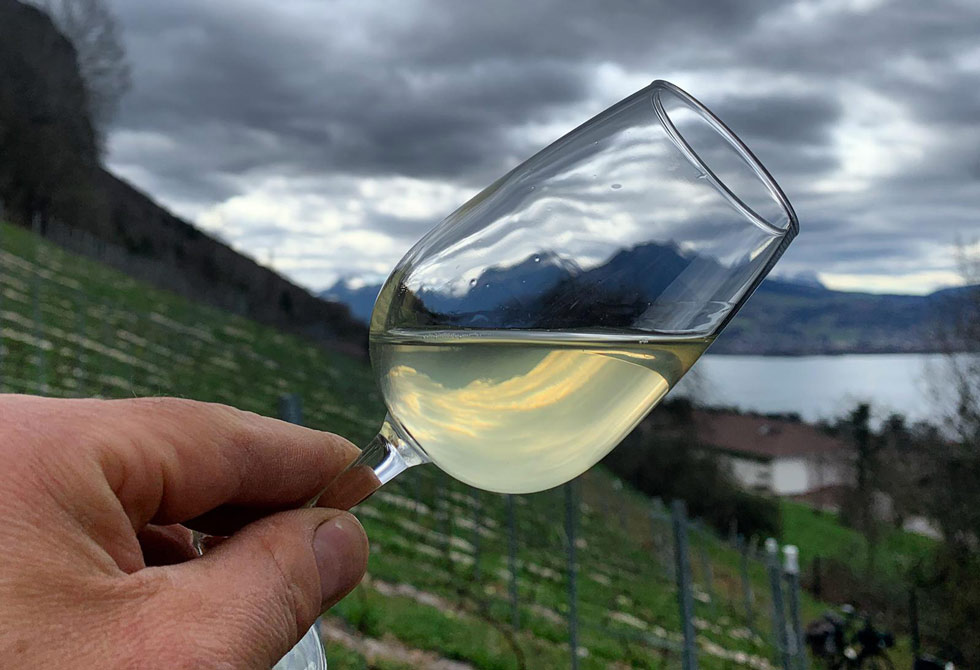
© Les Vignes du Lac / Tasting of the first bottles
From Domaine des Orchis Vineyards to the hillsides of Talloires
Philippe Héritier, a winegrower in Frangy as well as a well-known snail farmer, decided to plant grapevines along the hillsides of Talloires.
The landowner who initiated the project had come across a few old photos that showed grapevines covering his land once upon a time. He received much encouragement from Jean Sulpice, lead chef at the Michelin two-star Auberge du Père Bise restaurant, who had already enjoyed many times over the delicious fruits of the Domain des Orchis Vineyard’s labors.
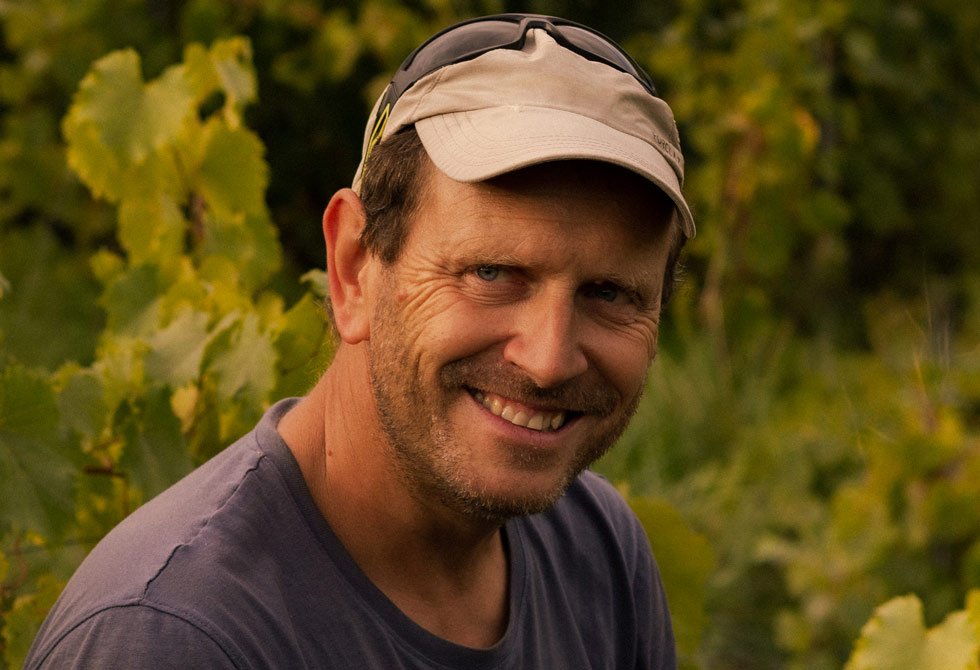
© Eloa Photographie / Philippe Héritier
New soil, a new location, and a new adventure for the man who, in 2007, took over the family vineyards in Frangy from his maternal grandfather. He now makes organic wine with help from his wife Catherine. Local Savoie grape varieties grow happily there: Altesse, which makes Roussette white wines, Mondeuse red wines, and even a little-know variety that makes Mondeuse white wines.
Adhering to the standards of today’s generation of winegrowers, he chose organic farming, applying a pesticide-free environmentally-friendly approach that uses only local indigenous yeasts when making wine, favors quality over quantity, and focuses on the quality of the grapes that then provide the powerful, full-bodied taste. Through word-of-mouth, Domain des Orchis Vineyards has made a great name for itself and is now served in some of France’s top restaurants.
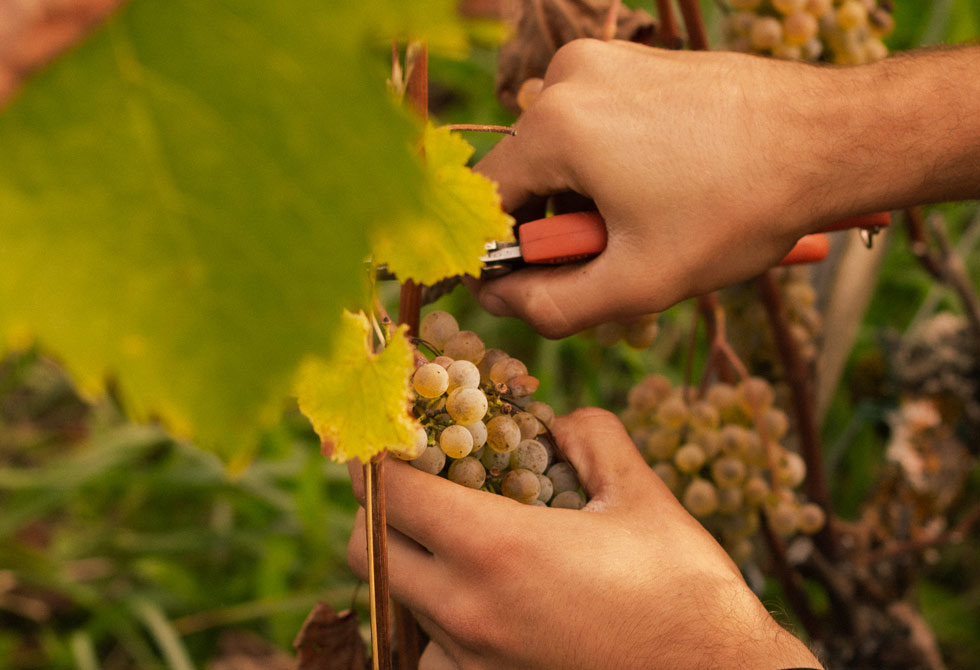
© Eloa Photographie / Vineyard work
This success owes itself to a few basic principles that Philippe now applies to the vineyard in Talloires: common sense, hard work, and observation.
“Observing nature led me to experiment and sometimes even break down certain long-held practices. For example, I experimented with late trimming, which resulted in slowing down growth and delaying the budding process until after the end of the frost season,” Philippe Héritier explains. He adds, “It is important to create a virtuous cycle when working the vines, and when you do they pay you back tenfold. Cut-grass and vine shoots decompose into the soil and contribute to self-fertilization.”
The first vintages are expected in 2025… We will let you know how they taste!
From Frangy to Menthon-Saint-Bernard Castle
Like his brother Philippe, Florent Héritier, from the aforementioned vineyard in Frangy, is the grandson of a winegrower.
In Menthon-Saint-Bernard, the fiefdom of his in-laws, he has been exporting his expertise since 2018, growing 3.5 hectares of organic grapes that he planted along the hillsides below the castle.
A longtime dream – perhaps a bit insane and almost too good to be considered in any other terms than in jest – discussed on Sunday walks as a family, hit home for his entourage and just happened to make it by word-of-mouth to the castle doors.
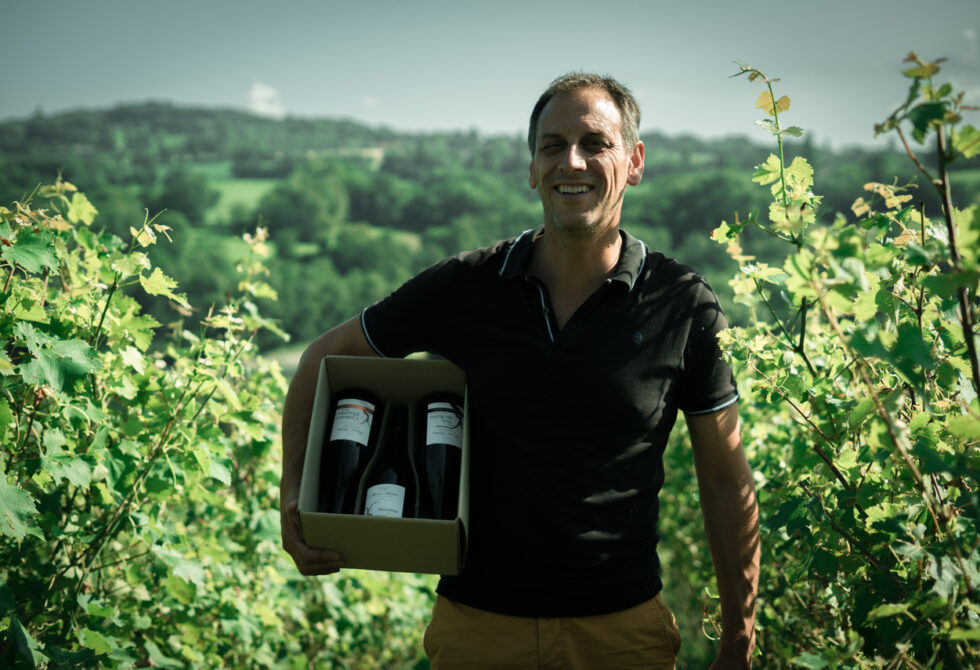
Florent Héritier
Enthralled with the project almost immediately, the Menthon family encouraged the initiative and agreed to rent the parcel of land to the winegrower.
This is how the non-profit organization Le Clos du Château was created in 2017. In addition to reviving the area’s illustrious winemaking past, dormant since the 1930s, the non-profit also worked to make the project a teaching tool and way to showcase the area’s heritage to local school children.
Today, more than three-hundred willing friends contribute to the adventure, attending all major events and gatherings, under Florent’s watchful eye and guide by his incredible expertise. Forty enthusiastic individuals participated in the first harvest.
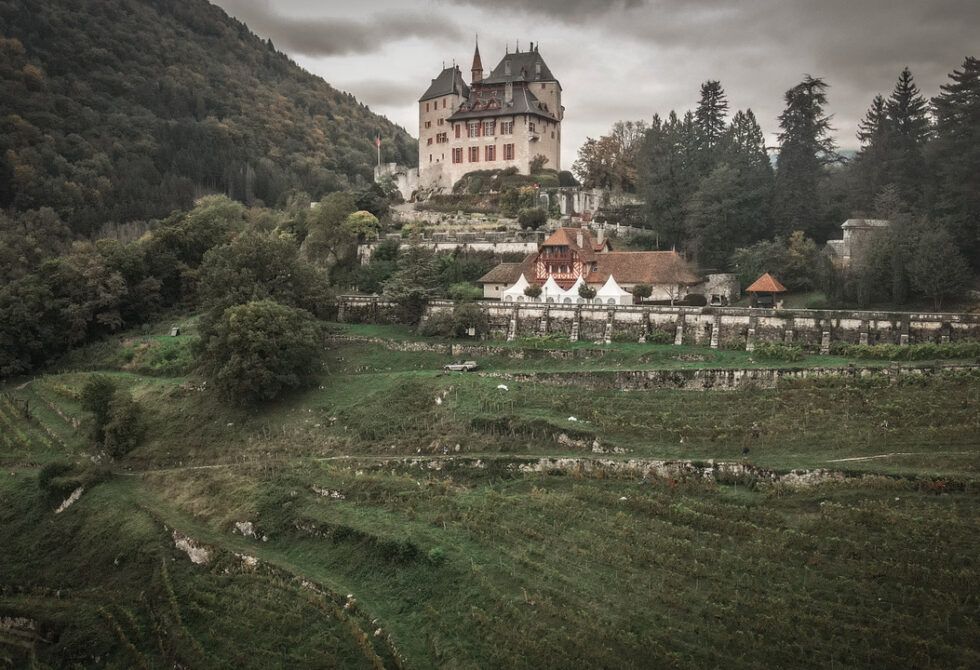
© Le Clos du Château / Vineyards under the Castle of Menthon-Saint-Bernard
Day-to-day, Florent watches over his eight types of grapevine (Altesse, white Mondeuse, Gringet, Jacquère, and Viognier for white wines; black Mondeuse, Douce Noire, and Gamaret for red wines) planted in three successive phases in 2018, 2020, and 2021.
This painstakingly meticulous work brings out the richness of the soil, whose location between the lake and mountains will undoubtedly produce several great-tasting wines. After two small harvests in 2020 and 2021, the “first major harvest” was in 2022. The first bottles of wine from this vineyard will be available in the area’s wine shops in just a few weeks.
Les Coteaux des Girondales in Villaz
Before changing careers to become a winegrower, Francis Rousset traveled the world alone, the best way in his opinion to meet people from all over – including two and a half months adventuring from St Petersburg to Japan by way of Vladivostok.
He has worked in a variety of professions, including as a bookkeeper at a bookstore in Aix-les-Bains. He left books behind for other adventures, such as moving to Canada for a few years with his family, before finally returning to his native Haute-Savoie.
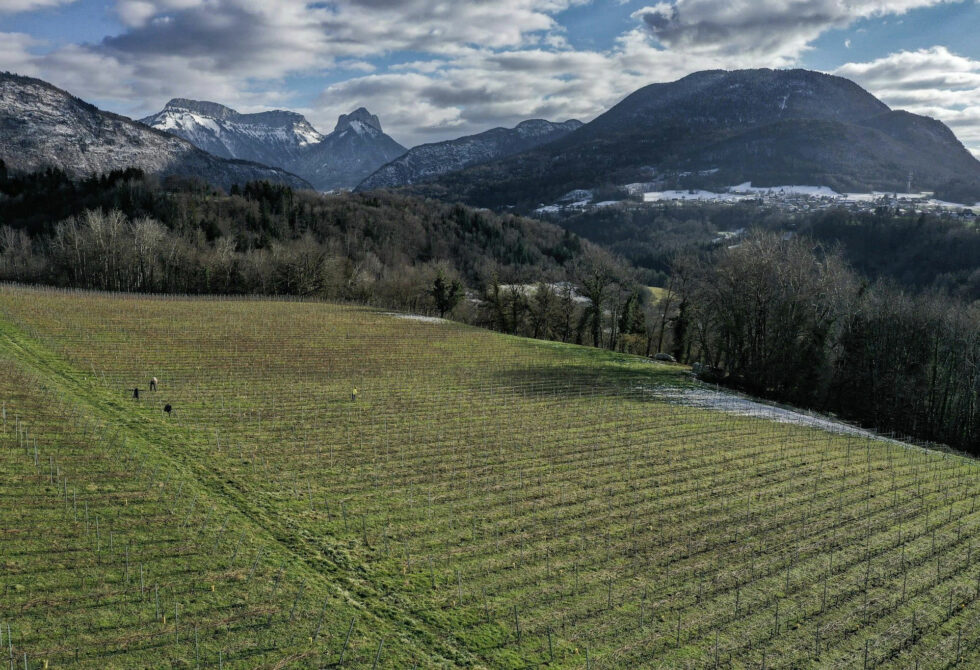
© Les Coteaux des Girondales / Vineyards in Villaz
In 2016, after completing a viticulture and oenology program in Beaune and a first experience growing grapes in Switzerland, he decided plant grapevines on a three hectare parcel of land along a hillside in Villaz, in a neighborhood referred to as “Les Vignes” (Vines), where grapevines once grew three hundred years ago. Based on the 1731 land register, the local “parish” grew a variety of grapes on a ten-hectare parcel.
Today, Florent grows organic Jacquère, Altesse, Roussanne, and Chardonnay grapes for white wines, and Gamaret, Mondeuse, Douce Noire, Pinot, and Persan for reds. The first harvest was in 2020, and the first bottles were opened in 2021. The vineyard’s wine barrels held six vintages (three whites and three reds), as well as a few blends, a regional wine, and a wine for any occasion.
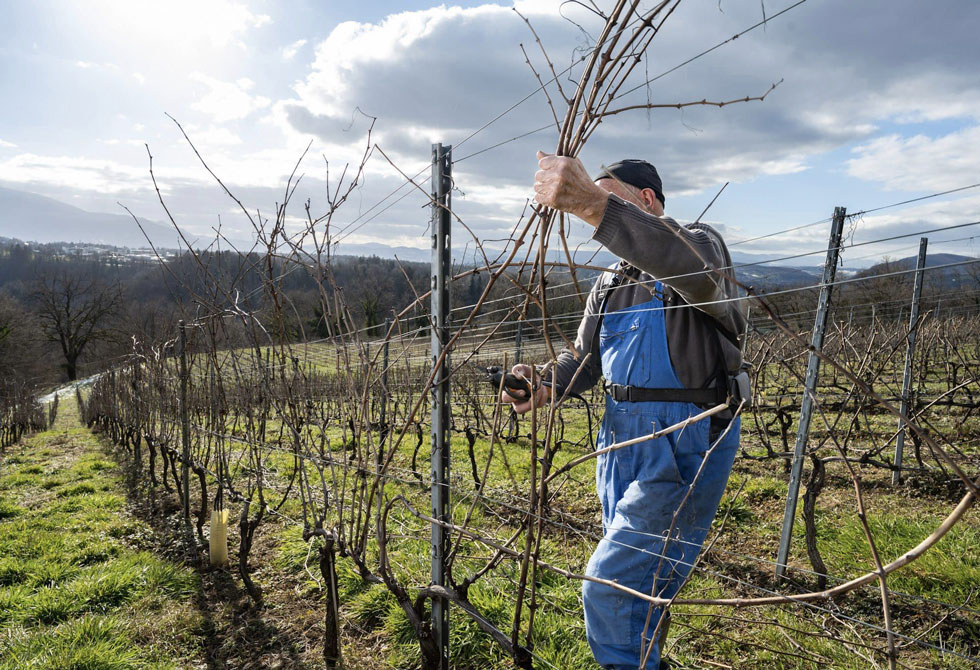
© Les Coteaux des Girondales / Vineyard work
“I practice my profession in the same way I like to travel.”
For the free-spirited Florent, always in search of new encounters and new adventures, growing grapes and making wine allows him to combine solo work in the vineyards with large festive gatherings to be enjoyed with as many people as possible. The latter includes opening his vineyard to customers on Saturday mornings.
“I strive to think small,” as he likes to say, “I like to cultivate what I already have. And nine varieties of grape growing on three hectares of land is more than enough. There is nothing routine about working in a vineyard and growing grapes. The seasons determine what we need to do, and work from one day to the next is never the same, from planting vines to selling wine by way of crushing grapes. My goal is to keep it simple, somewhat odd for a winegrower. I prefer to remain small, and to stay organic and local, working hard to retain a loyal clientele, instead of seeking growth at any cost.”
Another story
Copyright:
- © Le Clos du Château / Florent Héritier
Journalist: Aude Pollet-Thiollier
Translation: Darin Reisman
Alcohol abuse is dangerous for your health and should be consumed in moderation.
